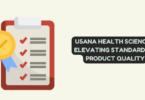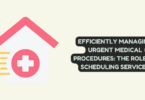
Upgrade Home Windows
Home improvement projects now consider energy-efficient windows a crucial element; they offer diverse benefits: sustainability and substantial cost savings. Designed to minimize heat transfer, curb energy consumption – enhancing overall thermal performance in the process; these windows embody not just environmental consciousness but also shrewd financial decisions with long-term payoffs on investment.
Understanding Low-E Glass Technology
Low-E (low emissivity) glass technology, a key component of energy-efficient windows, features an innovative coating on the glass surface. This application minimizes heat transfer and ultraviolet (UV) radiation: it permits natural light to infiltrate–preventing indoor heating or cooling from escaping. Consequently, this creates a more stable and comfortable interior environment. Homeowners, based on their climate and specific energy efficiency goals, have the option to choose from an array of Low-E glass options.
The Role of Window Frames in Energy Efficiency
The pivotal role of glass technology notwithstanding, the type of window frames significantly influences overall energy efficiency. Vinyl, fiberglass and wood composites offer superior insulation properties to traditional aluminum frames. The choice in window frame material actively reduces thermal bridging and enhances the windows’ overall energy performance.
Double or Triple Glazing
By choosing double or triple glazing for windows, one significantly enhances insulation: multiple glass layers create a barrier that reduces heat transfer–particularly effective in extreme weather conditions. This enhanced insulation not only boosts energy efficiency; it also augments soundproofing – offering homeowners an environment more comfortable and serene to live in. Specific climate considerations and energy efficiency goals determine the choice between double and triple glazing.
Energy Star Certification
Homeowners pursuing energy-efficient windows: they should prioritize the Energy Star certification. The U.S. Environmental Protection Agency (EPA) sets stringent energy performance criteria for windows bearing the Energy Star label; independent testing and verification ensure these meet superior levels of efficiency–a vital aspect in aiding homeowners to select suitable window options during home improvement projects.
Slider Windows
In the exploration of energy-efficient window options, one finds slider windows to be both stylish and practical. These horizontally opening windows provide ease of operation; this allows for improved ventilation control. Equipping slider windows with features such as Low-E glass and advanced frame materials enhances their attractiveness and functionality in any home. Slider windows, with their versatile design aesthetics, offer an outstanding solution for individuals who desire style and energy efficiency in tandem: a testament to the modernity they cater to.
The Financial Benefits of Energy-Efficient Windows
The initial expense of upgrading to energy-efficient windows may present a higher cost; however, the investment quickly proves its worth through long-term financial benefits: notably reduced utility bills–the result of decreased heating and cooling needs all year round. Homeowners will significantly save on energy costs; furthermore, over time – owing to lessen energy consumption and heightened home value – they will reap returns from their initial outlay in these efficient windows.
The Environmental Impact of Energy-Efficient Choices
Beyond personal savings, the choice of energy-efficient windows profoundly impacts the environment: homeowners who reduce their energy consumption contribute to a decrease in greenhouse gas emissions and aid in combating climate change. Aligning with the increasing awareness of environmental responsibility—these sustainable features make them an invaluable addition to home improvement projects that prioritize eco-consciousness.
Upgrading to energy-efficient windows concludes as a transformative step toward greener and more sustainable future; understanding the involved technologies–such as Low-E glass and advanced framing materials–empowers homeowners: it enables them to align their choices with energy efficiency goals. The compelling investment in homes’ overall well-being, indeed planet’s, is evidenced by financial savings; environmental impact – notably reducing greenhouse gas emissions–enhanced comfort further bolster this rationale. The choice of stylish and efficient options, such as slider windows, further elevates the aesthetic appeal: it demonstrates that sustainability–often associated with simplicity–can indeed coexist harmoniously in home improvement’s world marked by sophistication.






